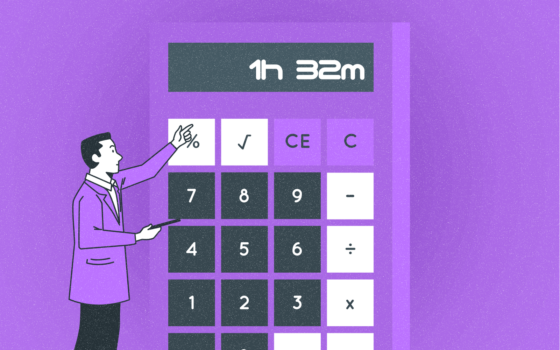What Is GDPR Compliance?
GDPR Compliance Summary: • EU data protection law effective since May 25, 2018 • Applies to organizations handling EU residents' personal data • Key principles: consent, data minimization, breach notification • Fines up to €20 million or 4% of global turnover • Requires Data Protection Officer (DPO) for certain organizations • Grants individuals rights over their personal data
The General Data Protection Regulation (GDPR) has become a cornerstone of data privacy legislation since its implementation on May 25, 2018. As we navigate the complexities of data protection in 2024, GDPR compliance remains a critical concern for organizations worldwide, not just those based in the European Union (EU).
What is GDPR?
GDPR is a comprehensive data protection law that aims to give EU residents more control over their personal data and to simplify the regulatory environment for international business. It applies to any organization that processes the personal data of EU residents, regardless of the organization's location.
Key Principles of GDPR
- Lawfulness, fairness, and transparency
- Purpose limitation
- Data minimization
- Accuracy
- Storage limitation
- Integrity and confidentiality (security)
- Accountability
These principles form the foundation of GDPR and guide organizations in their data processing activities.
GDPR Compliance: What Does It Mean for Organizations?
Achieving GDPR compliance involves a comprehensive approach to data protection. Here's what organizations need to consider:
1. Data Protection Officer (DPO)
Certain organizations are required to appoint a DPO. This role is crucial in overseeing data protection strategy and implementation to ensure compliance with GDPR requirements.
Did you know? Not all organizations need a DPO. The requirement depends on the nature, scope, and scale of data processing activities.
2. Data Protection Impact Assessments (DPIAs)
Organizations must conduct DPIAs for high-risk processing activities. These assessments help identify and mitigate privacy risks associated with data processing.
3. Consent Management
GDPR sets a high standard for consent. Organizations must ensure that consent is freely given, specific, informed, and unambiguous. This often requires revisiting and updating consent mechanisms.
4. Data Breach Notification
Under GDPR, organizations must report certain types of data breaches to the relevant supervisory authority within 72 hours of becoming aware of the breach. In some cases, they must also inform the affected individuals.
5. Rights of Data Subjects
GDPR grants individuals several rights concerning their personal data, including:
| Right | Description |
| Right to Access | Individuals can request access to their personal data |
| Right to Rectification | Individuals can have inaccurate personal data corrected |
| Right to Erasure | Also known as 'right to be forgotten' |
| Right to Restrict Processing | Individuals can request the restriction of their personal data processing |
| Right to Data Portability | Individuals can request their data in a structured, commonly used format |
| Right to Object | Individuals can object to the processing of their personal data |
Organizations must have processes in place to handle these requests efficiently and within the stipulated timeframes.
The Cost of Non-Compliance
The penalties for non-compliance with GDPR can be severe. Organizations can face fines of up to €20 million or 4% of their global annual turnover, whichever is higher. As of 2024, this translates to approximately $21.6 million USD.
Notable GDPR Fines: • Amazon: €746 million ($805 million USD) in 2021 • WhatsApp: €225 million ($243 million USD) in 2021 • Google Ireland: €90 million ($97 million USD) in 2022
These fines underscore the importance of GDPR compliance and the potential financial risks of non-compliance.
GDPR Compliance Challenges
While the benefits of GDPR compliance are clear, organizations face several challenges in achieving and maintaining compliance:
1. Data Mapping and Inventory
Organizations must have a clear understanding of what personal data they hold, where it's stored, and how it's processed. This can be particularly challenging for large organizations with complex data ecosystems.
2. Third-Party Risk Management
GDPR compliance extends to an organization's vendors and partners. Ensuring that all third parties who handle personal data are also compliant can be a significant undertaking.
3. Cross-Border Data Transfers
The transfer of personal data outside the EU is strictly regulated under GDPR. Recent legal developments, such as the invalidation of the Privacy Shield framework, have made this area particularly complex.
4. Balancing Data Utility and Privacy
Organizations must strike a balance between leveraging data for business purposes and respecting individual privacy rights. This often requires a shift in organizational culture and practices.
GDPR Compliance Best Practices
To navigate these challenges and achieve GDPR compliance, organizations should consider the following best practices:
- Conduct regular data protection audits
- Implement privacy by design and default
- Provide ongoing training for employees
- Maintain detailed documentation of data processing activities
- Regularly review and update data protection policies and procedures
- Implement robust data security measures
The Future of GDPR and Data Protection
As we look ahead, several trends are shaping the future of GDPR and data protection:
1. Artificial Intelligence and Machine Learning
The use of AI and ML in data processing raises new questions about data protection. The EU is currently working on an AI Act to address these challenges.
2. Increased Global Alignment
Many countries are introducing GDPR-inspired legislation. For example, the California Consumer Privacy Act (CCPA) in the United States shares many similarities with GDPR.
3. Enhanced Enforcement
We're likely to see more aggressive enforcement of GDPR in the coming years, with regulators focusing on high-impact cases.
4. Data Sovereignty
There's a growing trend towards data localization, with some countries requiring certain types of data to be stored within their borders.
"GDPR is not just about compliance; it's about building trust with your customers and demonstrating your commitment to protecting their privacy."
Conclusion
GDPR compliance is not a one-time effort but an ongoing process. As data protection regulations continue to evolve, organizations must stay informed and adapt their practices accordingly. By prioritizing data protection and privacy, organizations can not only avoid hefty fines but also build trust with their customers and gain a competitive advantage in an increasingly data-driven world.
While the path to GDPR compliance may seem daunting, the benefits far outweigh the challenges. As we move further into the digital age, those organizations that embrace GDPR and make data protection a core part of their business strategy will be best positioned for success.
Remember, GDPR compliance is not just about avoiding penalties – it's about respecting individual privacy rights and being a responsible steward of personal data. In today's digital landscape, that's not just good compliance – it's good business.
For the most up-to-date information on GDPR, visit the official European Commission's Data Protection page.


